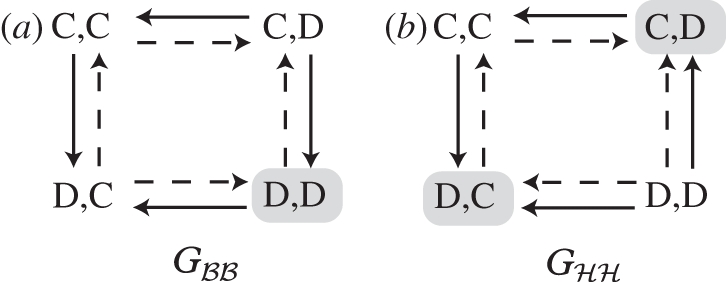Figure 3.

The movement diagram of the two games Gℬℬ and Gℋℋ. The arrows between each outcome (labelled by the players' actions) denotes whether each player prefers the outcome to another or not (solid arrows, role 1 player; dashed arrows, role 2 player). The NE for each game are marked by a grey rectangle. In Gℬℬ (a), the leading and coming out of the NE are in opposite directions for the two players, signifying that they are in local conflict at this equilibrium. In Gℋℋ, on the other hand, the arrows leading from (D,D) outcome to the two NE are in the same direction. For these movements, the players' interests are aligned. Note that the players are still in conflict about the movement between the NE and the (C,C) outcome.
